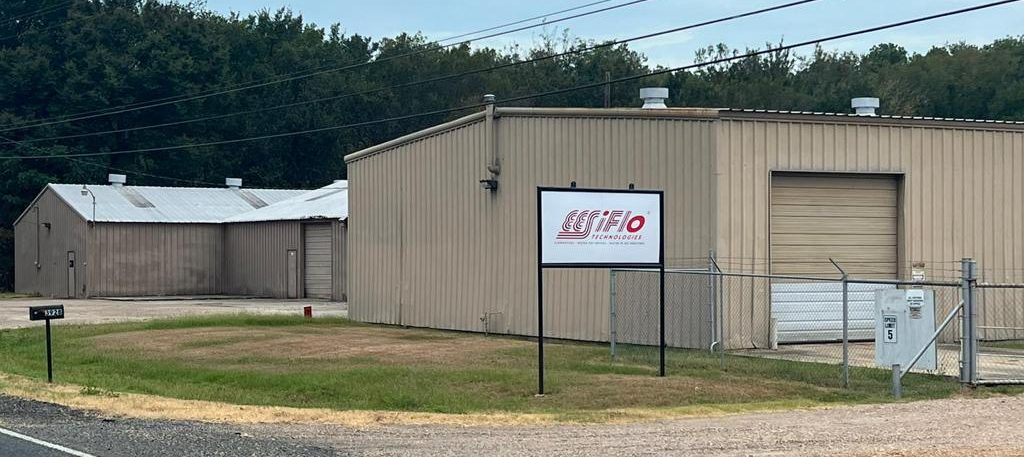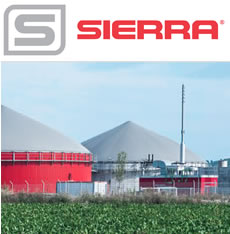 |
| Precise Biogas Flow Measurement |
| As oil prices remain high, we are in the midst of a nation-wide initiative to seek renewable sources of energy to increase energy efficiency and energy security. Renewable energy accounted for 13.2% of the domestically produced electricity in 2012… |
Precise Biogas Flow Measurement |
 |
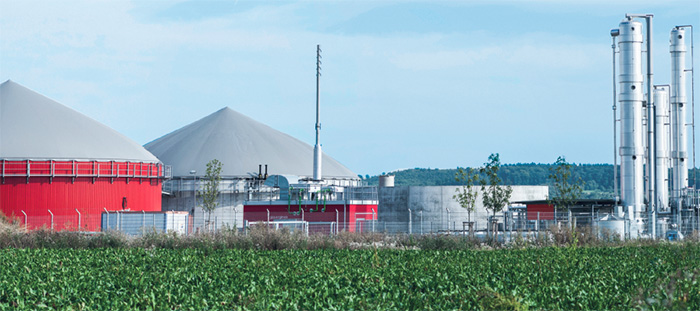
Precise Biogas Flow Measurement:
Overcoming the Challenges of Changing
Gas Composition
By Scott Rouse, VP Product Management, Sierra Instruments
INTRODUCTION
As oil prices remain high, we are in the midst of a nation-wide initiative to seek renewable sources of energy to increase energy efficiency and energy security. Renewable energy accounted for 13.2% of the domestically produced electricity in 2012. Among the sources of renewable energy is the production of biogas from landfill gas (LFG) or digester gas. The production of biogas is an anaerobic process in which micro-organisms break down (digest) biodegradable material in the absence of oxygen. This biogas is then processed and used as fuel for cogeneration engines or sold to the national energy grid.
To monetize biogas and create the most efficient fuel sources, it is critical to accurately measure how much biogas is produced in each stage of the process. Accurately measuring biogas is an inherently challenging application with its changing gas composition, low pressure, and dirty, wet gas. Finding an accurate mass flow meter measurement solution for this challenging application increases a facility’s efficiency and revenue stream due to increased biogas and energy production.
Situation: Finding Sources of Biogas
Many large wastewater treatment plants have digester tanks that use sewage sludge as the biodegradable material. During the process, the micro-organisms in the air-tight digester tank transform sewage into a mixture of primarily methane (CH4) and carbon dioxide (CO2 ), producing renewable energy that can be used for heating, electricity or to fuel internal combustion engines.
Harnessing biogas from landfills is also a quickly growing source of biogas. The Environmental Protection Agency estimates that there are approximately 6,000 landfills in the United States contributing an estimated 650 billion cubic feet of methane per year. Landfill gas, containing mostly CH4 and CO2, is produced by wet organic waste, decomposing under anaerobic conditions in a landfill which is covered and mechanically compressed by the weight of the material that is deposited from above. This material prevents oxygen exposure thus allowing anaerobic microbes to thrive. As seen in Figure 1, this gas builds up and is slowly released into the atmosphere.
Much like digester gas at wastewater treatment plants, large landfills collect and use biogas for energy. Its heating value is around 600 BTU per cubic foot (21 BTU per liter), depending on its composition. In contrast, natural gas contains about 80% methane, with a heating value of around 1000 BTU per cubic foot (35 BTU per liter). Filtering biogas, or “scrubbing” it, can remove the carbon dioxide and other impurities, raising the heating value. As shown in Figure 1, natural gas may be added to the biogas in order to raise its heating value. In all parts of this process, facilities managers must accurately measure the flow rate of the biogas and natural gas to get the optimal heat value and energy potential from their biogas production facility.
Challenge:
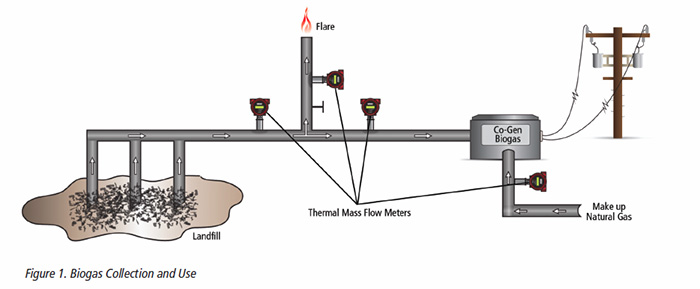
Challenge: Varying Composition of Biogas
The flow measurement challenge in biogas applications is the fact that the composition of biogas varies depending upon the source. Biogas typically contains about 55%-65% methane, 30%-35% carbon dioxide, and some hydrogen, nitrogen and other impurities. However, a representative compositional analysis (in volumetric percentage), shown in Table 1, shows the wide ranges in methane composition between 50%-75% and carbon dioxide between 25%-50%. This represents how the biogas composition can change over time with changing conditions in the landfill or in the digester tank. Such variable composition makes biogas very difficult to accurately measure.
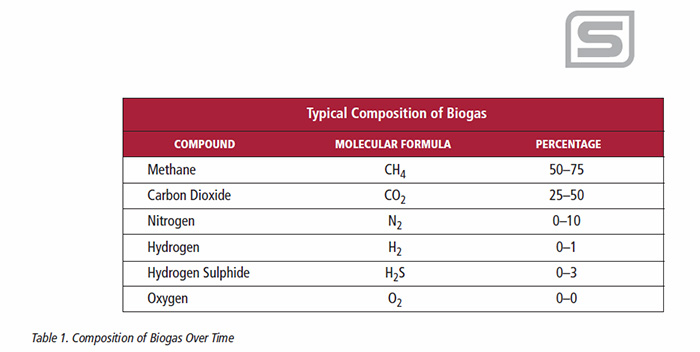
Most flow meters are calibrated for one specific gas mix composition; thus they cannot provide accurate mass flow meter readings if the composition changes without sending the meter back to the factory for recalibration.
The driver for capturing and measuring biogas from landfills and wastewater treatment plants is to produce efficient energy sources if used for co-generation or to meet EPA requirements if flared. In co-generation, facilities managers are dependent on accurate flow measurements of biogas produced, even with its varying gas composition, so they know exactly how much natural gas to add to the biogas, creating fuel with the highest heat value or BTUs. If the biogas heat values are too low due to gas composition changes and other factors, the optimal amount of natural gas will not be added and co-generation will not be efficient. This heating value of the biogas, thus the gas composition, is also critical in combustion systems—boilers, turbines, or fuel cells-for producing space heating, water heating, drying, absorption cooling, and steam production. The composition of the gas used in gas turbines and fuel cells to produce electricity is directly related to the efficiency of such devices and thus to the profit at which the electricity produced can be sold. The same is true of stationary or mobile internal combustion engines where composition is related to shaft horsepower, electricity cogeneration efficiency and vehicle MPG. Finally, if the biogas is sold to the natural gas grid, custody transfer is based on the composition.
Problem: How to Measure Biogas and Manage Variable Composition
Since the biogas composition is critical to its energy producing value, facilities need to assess the best flow meter measurement technology to manage the compositional changes in biogas. Many companies with varying technologies are interested in measuring the biogas as it leaves the landfill or digester tank, but this is a challenging application for many reasons:
- Varying gas compositions (see Table 1) make accurate measurements difficult because most meters are calibrated for one gas or mixture; when the composition changes, the flow measurements are no longer accurate and the meter must be recalibrated.
- Low pressure makes differential pressure (P) devices such as orifice plates unsuitable since they require a fairly large differential pressure to operate.
- Biogas is often very dirty with a high moisture and particulate content, which can clog up devices such as annubars and orifice plates, and gum up turbine meters and similar instruments that have moving parts.
Traditionally, thermal mass flow meters have been the instrument of choice. They offer reasonable accuracy for the price (2% of reading) and use a convenient insertion design that eliminates pressure drop. They also have no moving parts and can measure both high and low flows with a 100:1 turndown.
While such meters do many things well, one thing they cannot do is account for changes in biogas composition. These flow meters must be calibrated for a specific biogas mix and rapidly lose accuracy if gas composition changes, which means the instrument must be sent back to the factory to recalibrate for the changing gas composition, wasting time, resources and money. One way to account for variable composition would be with a continuous real-time sampling system integrated with a flow meter. A few systems are available with more in development, but integrating such a system into a flow measurement system is typically expensive and high-maintenance.
Figure 2 shows the complexity of such a system. The landfill gas is sampled (using a chemical cell) and the CO2 content is analyzed and a mini computer uses this compositional data to correct the flow rate.
In general, while biogas composition does change over time, it doesn’t change that quickly. In current practice, the composition of the biogas is calculated by periodic manual sampling of the various digesters or landfill collection points, avoiding the need for an expensive system shown in Figure 2. Ideally, composition management would be moved into the flow meter itself. In fact, recent advances in the field of thermal technology make this possible for the first time.
Solution: New Metering Technology Enables On-Board Management of Changing Compositions
Recently, thermal technology has undergone significant advancements, moving from two-sensor to four-sensor technology (see Figure 3) which yields unprecedented accuracy for thermal insertion flowmeters of +/- 0.75% of reading (far better than the 2.0% reading possible previously with other thermal technologies). New four-sensor quadratherm technology, pioneered by Sierra, is emerging as an optimal solution for accurately measuring and managing biogas even with its changing gas composition.
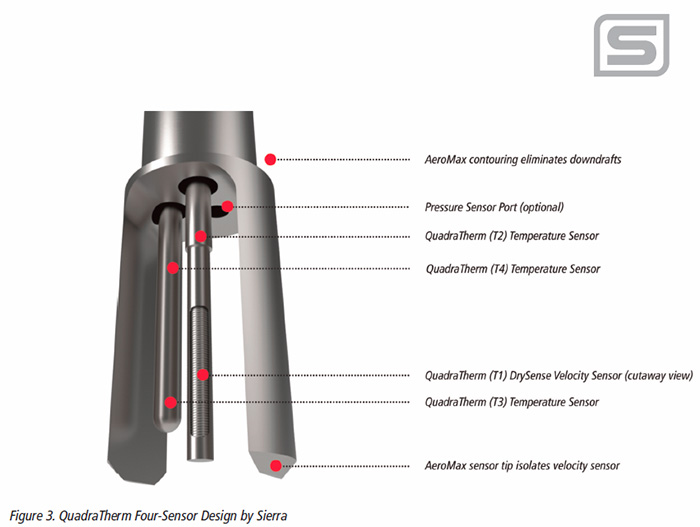
Along with this new four-sensor technology, traditional analog measurement circuits, like the Wheatstone bridge, have been superseded by more powerful hyper-fast microprocessors that run comprehensive flow-measurement algorithms to compute mass flow. This proprietary algorithm set serves as the “brain” of the mass flow meter, using inputs from the four sensors to solve the first law of thermodynamics for the sensor in the biogas flow stream. This allows for precise calculation of heat convected away by biogas mass flow, thus providing accurate mass flow measurements in a fraction of a second. This algorithm also allows for management of gas composition because recalibration every time the gas changes is no longer required—a true breakthrough in mass flow measurement.
By combining four-sensor technology with this algorithm set, the meter has the capability to change gas and compositions without losing accuracy. This new technology creates many benefits:
- The meter can hold up to four user customizable gas mixtures onboard and store biogas composition in a proprietary gas library, easily accessed through user software.
- Engineers and operators have access to this gas library which contains all the gas properties needed to make algorithmic gas mass flow rate calculations.
Once sampling has determined the biogas composition, operators can use a simple software tool to create and name a proprietary biogas mixture. This tool uses the internet to download the gas properties of new mixtures and then uploads the new mixture into the meter in the field. This allows operators and engineers to use just one meter with one calibration for varying gas compositions. This offers a major cost savings over expensive continuous sampling devices.
Result: Highly Adaptable Four-Sensor Thermal Technology
The four-sensor quadratherm mass flow meter pictured in Figure 4 meets the criteria for successful biogas measurement by managing changes in:
- Gas composition
- Gas mass flow rate
- Gas temperature
- Gas pressure
- Outside temperature
- Pipe conditions (size and roughness)
- Flow profile
These changing conditions can all be managed with accurate readings without sending the flow meter back to the factory for recalibration, reducing downtime and saving money. Traditional two-sensor thermal flow meters need to be sent back to the factory for recalibration each time the gas composition changes or the application specification changes, so over the lifetime of the product, thousands of dollars will be saved in calibration costs, shut downs and loss of gas monetization through loss of accuracy. In the effort to harness biofuels such as biogas, the demand for accurate flow measurement for varying gas compositions is growing. Finding the best flow meter for this biogas measurement technology is critical for optimizing the energy yields of biogas production. With these new advancements in foursensor quadratherm technology, operators now have higher accuracy with changing gas composition and more field flexibility. This allows operators to monetize biogas and use it to get the top efficiency out of cogeneration gas engines and enables highly accurate custody transfer of gas to the collection system.



